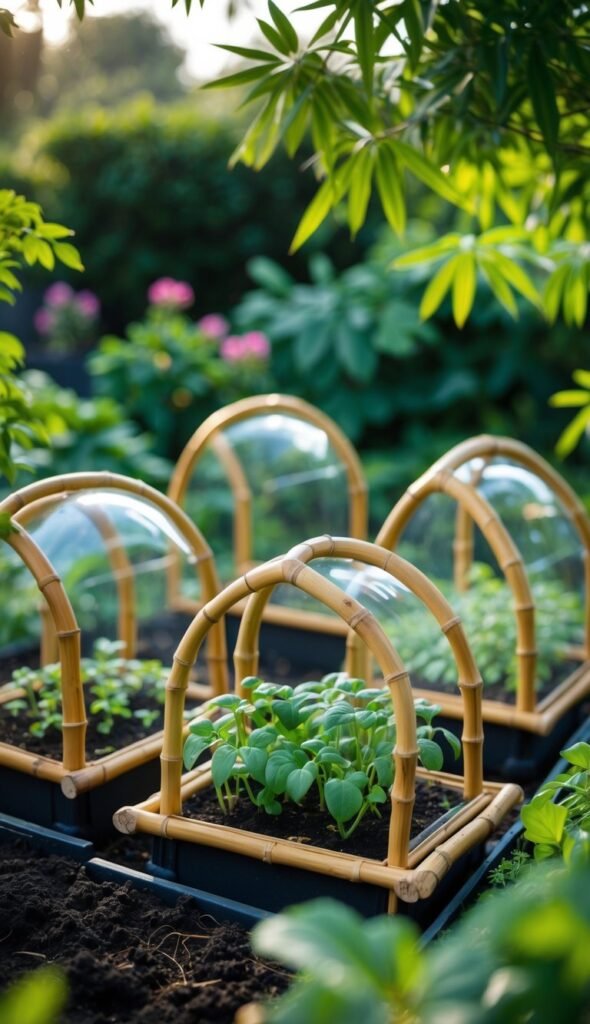Looking for an easy way to protect your plants from pests, frost, and harsh weather? Garden cloches offer a smart solution that helps your plants grow healthy and strong.
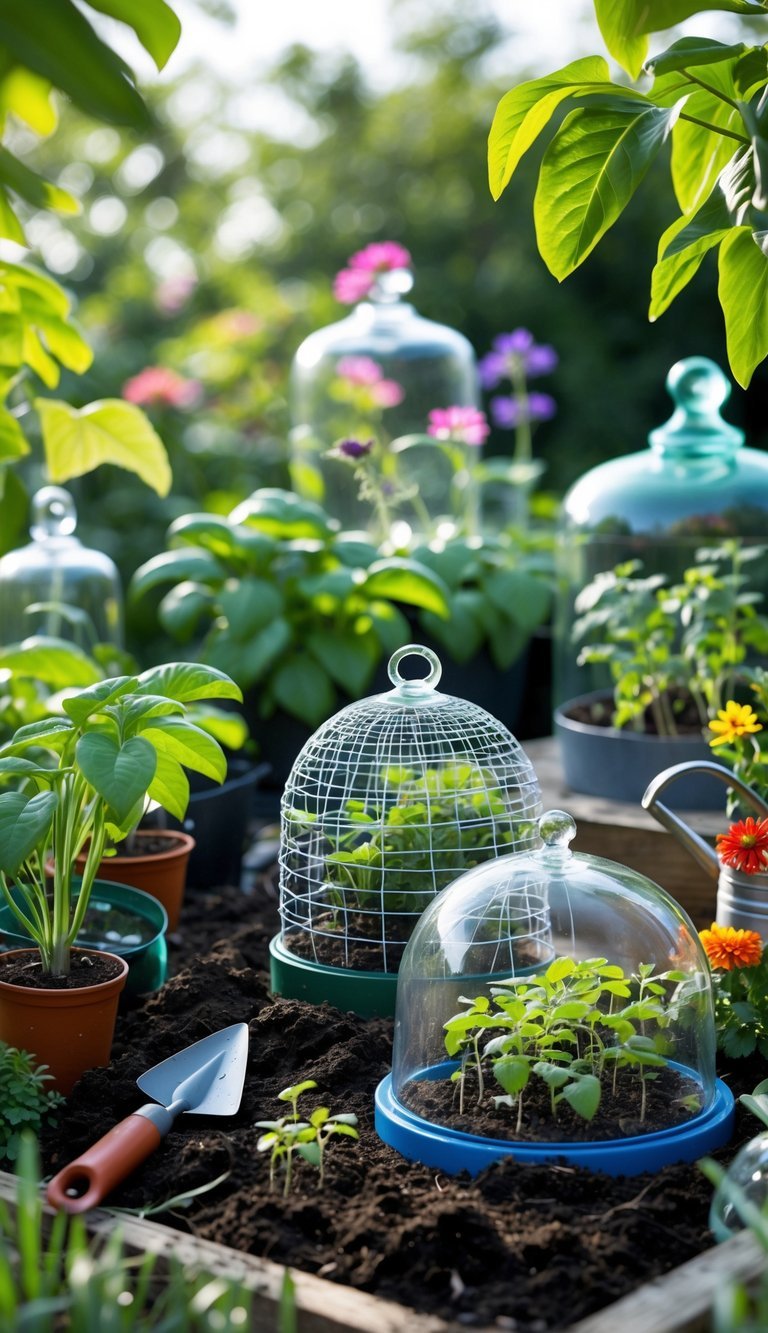
You can choose from many types of cloches, like glass covers, wire frames, or even ones made from recycled materials. These simple tools create a protective shield, making your gardening more successful and enjoyable.
Key Takeaways
- Cloches help guard plants against bad weather and pests.
- Different materials like glass, wire, and recycled plastic can be used.
- Using cloches improves plant health and growth.
1. Glass Bell Jar Cloche
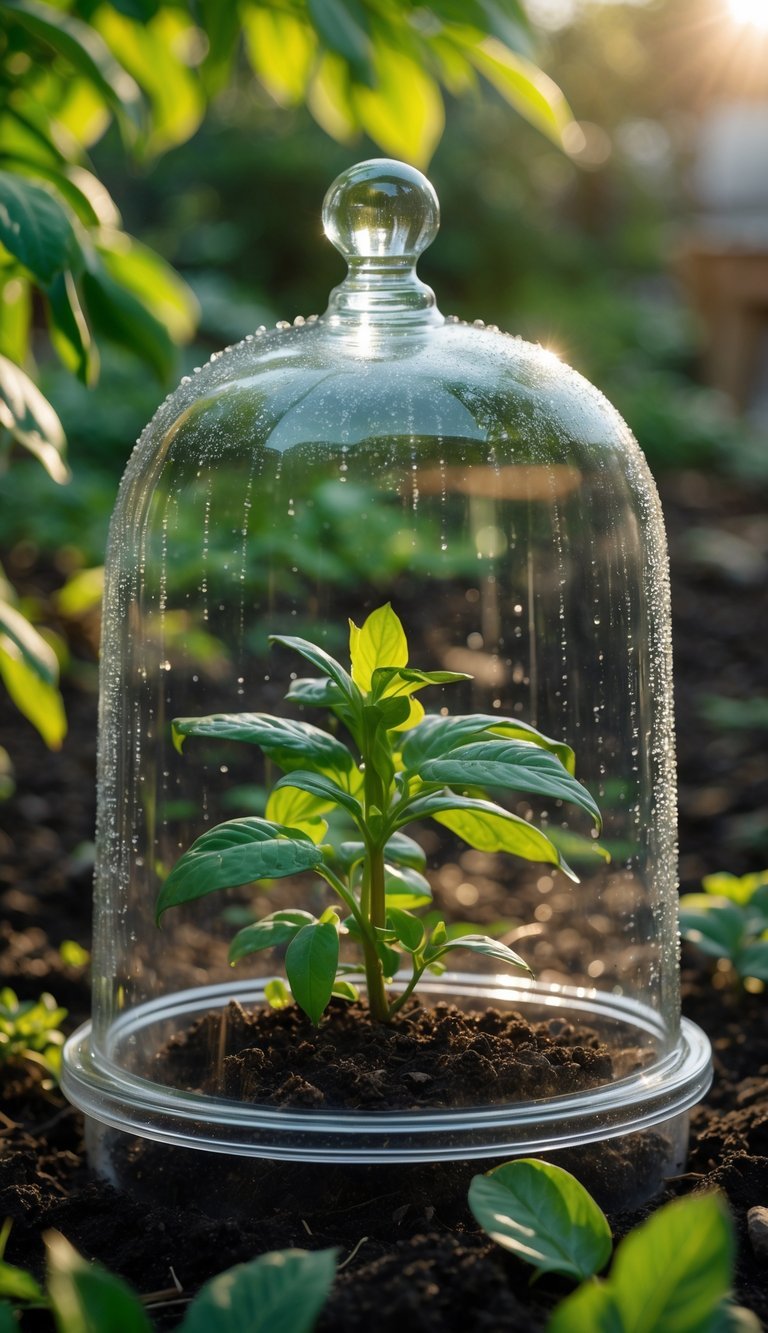
You can use a glass bell jar to shield your plants from cold weather and bugs. The clear glass lets light through, helping your plants stay warm and moist underneath.
This type of cloche combines practical protection with a classic, attractive look that fits well in any garden.
2. Wire Mesh Plant Cover
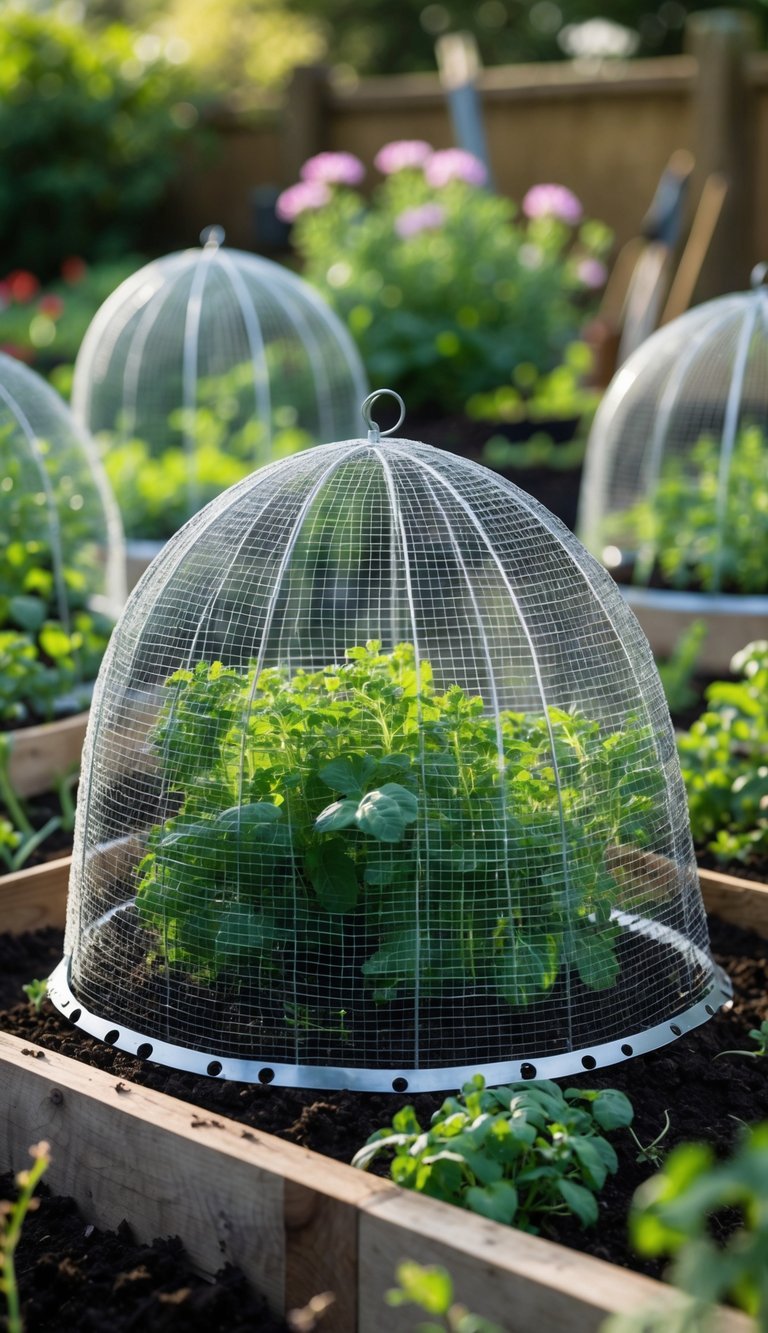
You can protect your plants from small animals and birds by using a wire mesh cover. This type lets air flow freely, so your plants won’t overheat.
It’s a smart choice if you want good ventilation, especially in warmer areas. This method works well for vegetable patches where rabbits and squirrels might cause trouble.
3. Using Plastic Bottles as Plant Covers
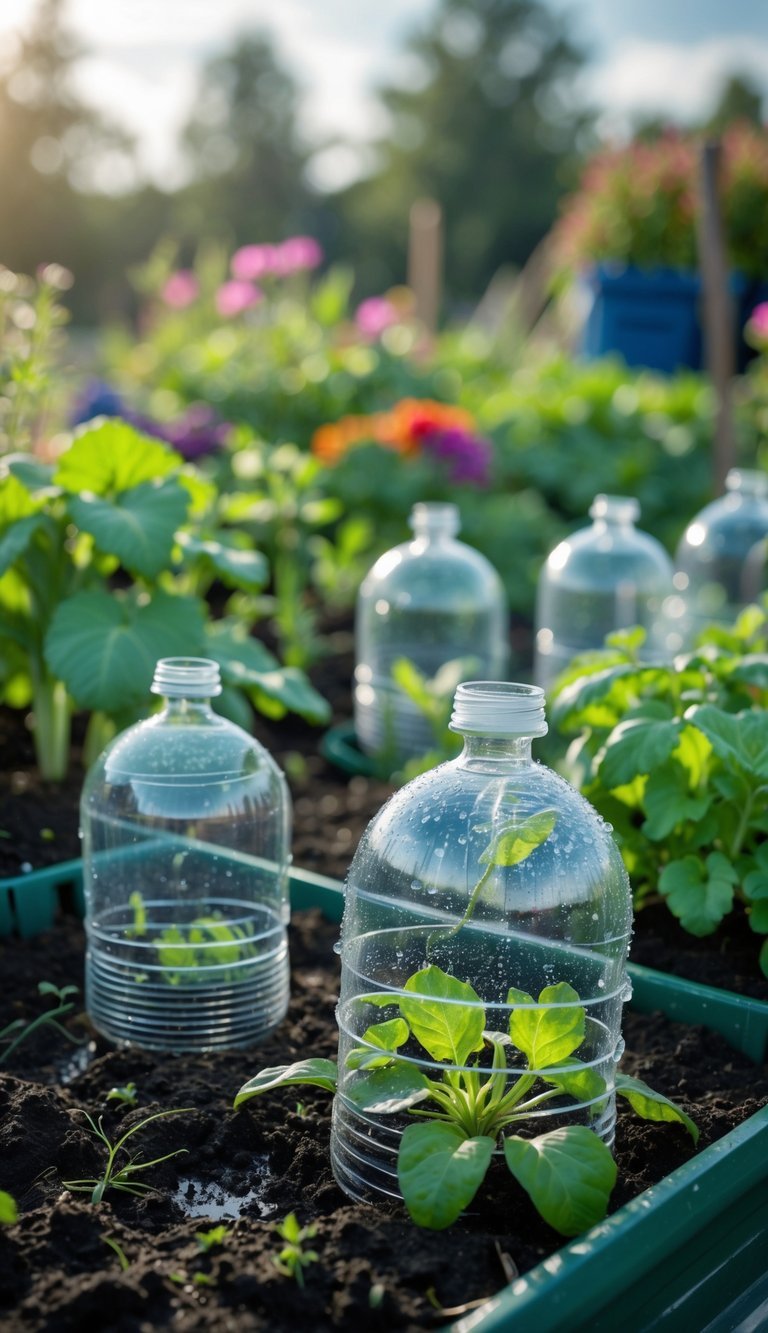
You can turn empty plastic bottles into simple covers to protect your plants. Cut off the bottom part of a large bottle and place it over the seedling.
The bottle’s cap can be adjusted to control air flow inside. This method saves money, helps keep young plants safe from cold and wind, and lowers plastic waste in your garden.
4. Bamboo Frame Cloches
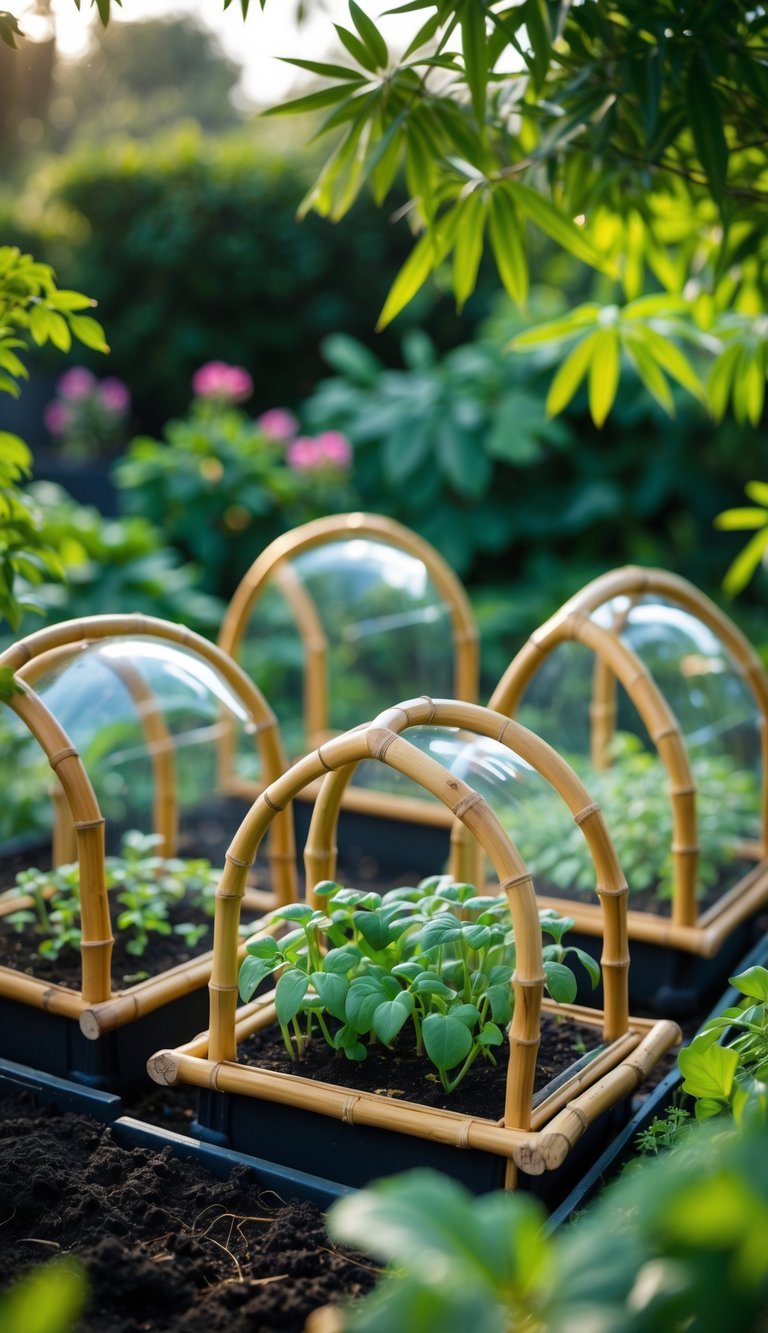
You can build a bamboo frame cloche using sticks and twine for a sturdy but light structure. This natural frame works well to hold plastic or netting over your plants.
It blends in nicely with your garden while offering an eco-friendly way to protect young plants from weather and pests.
5. Small Greenhouse Covers
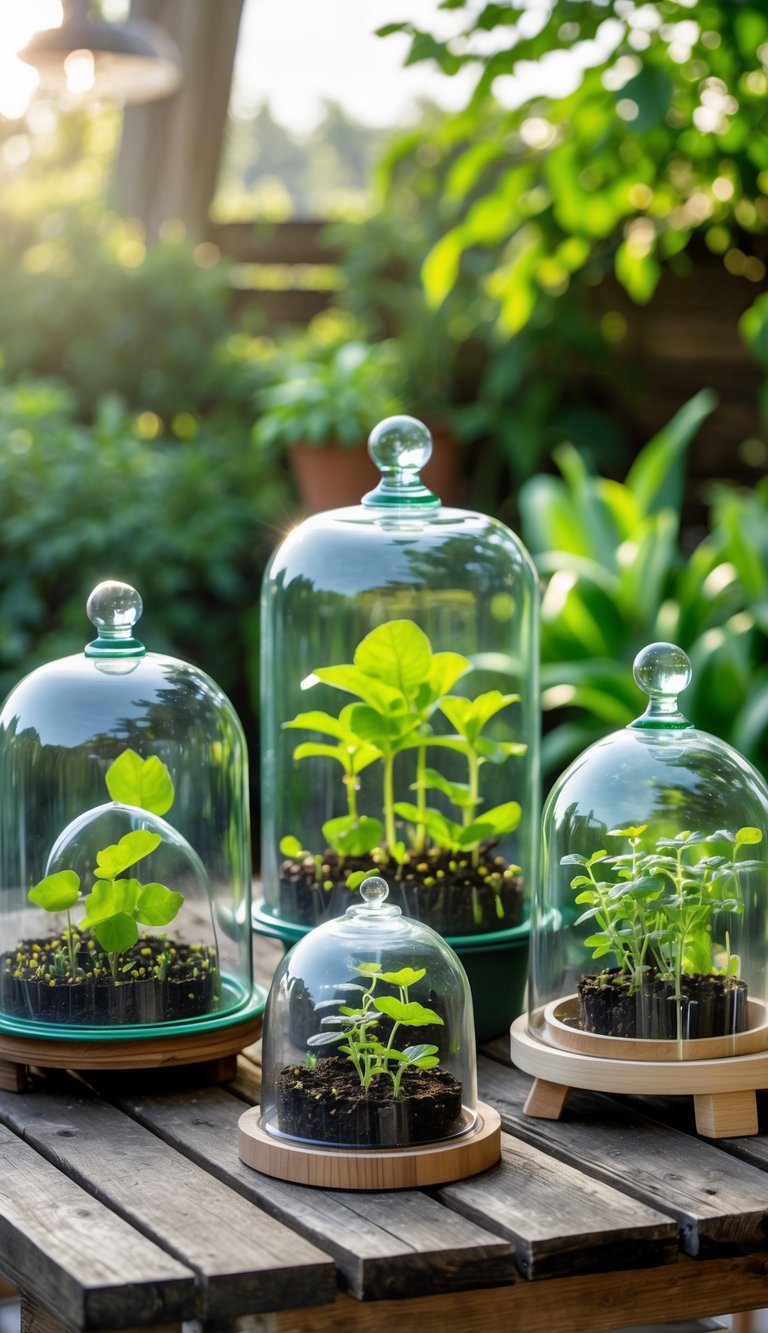
You can protect young plants by using a small greenhouse cover made from clear plastic or glass. These covers keep warmth and moisture close to your seedlings.
They also shield plants from sudden weather changes. Using one helps you grow plants faster and extend your growing season.
6. Dome-Shaped Acrylic Plant Cover
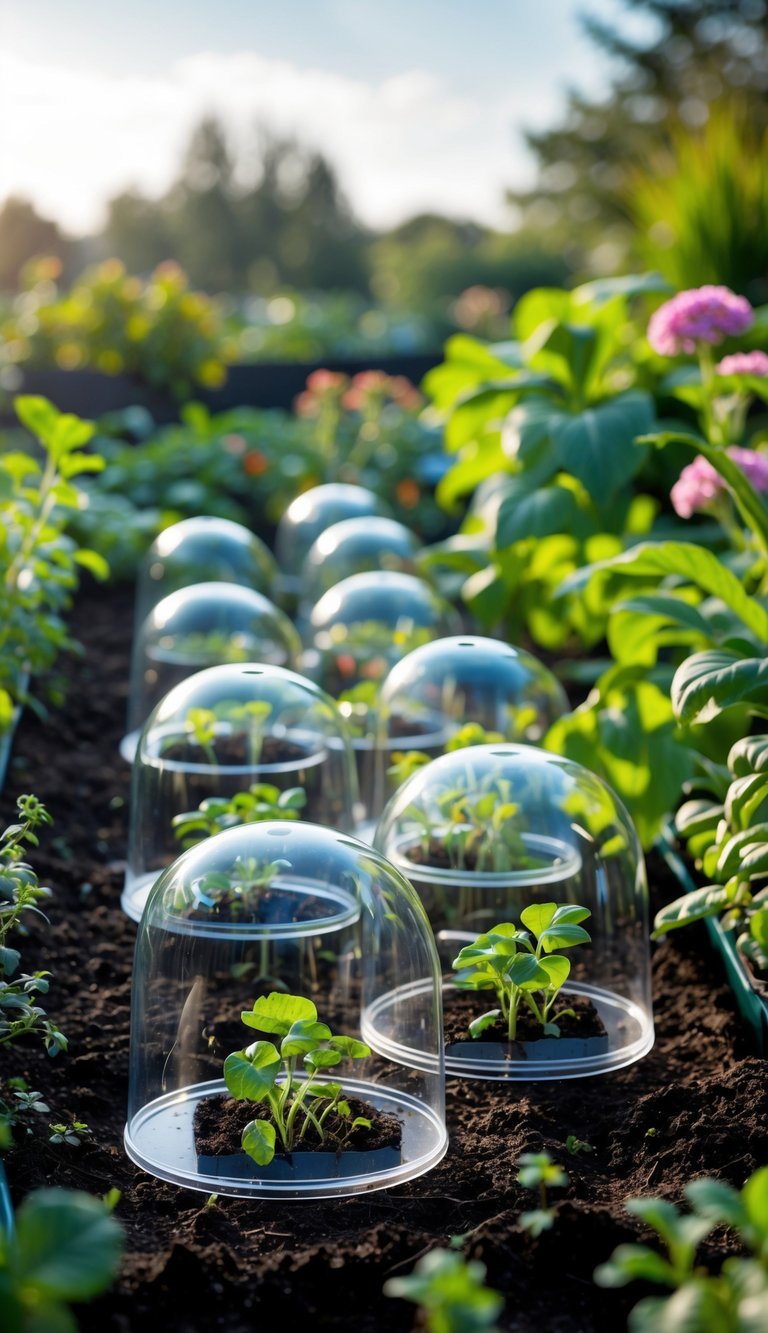
You can protect your plants with a dome-shaped cover made from acrylic, which is strong and light. This type of cover keeps warmth in and resists breaking, making it safer around kids or pets.
If you want a lasting option that handles weather well, this cover is a good fit for your garden.
7. Wire Mesh and Wooden Frame Plant Cover
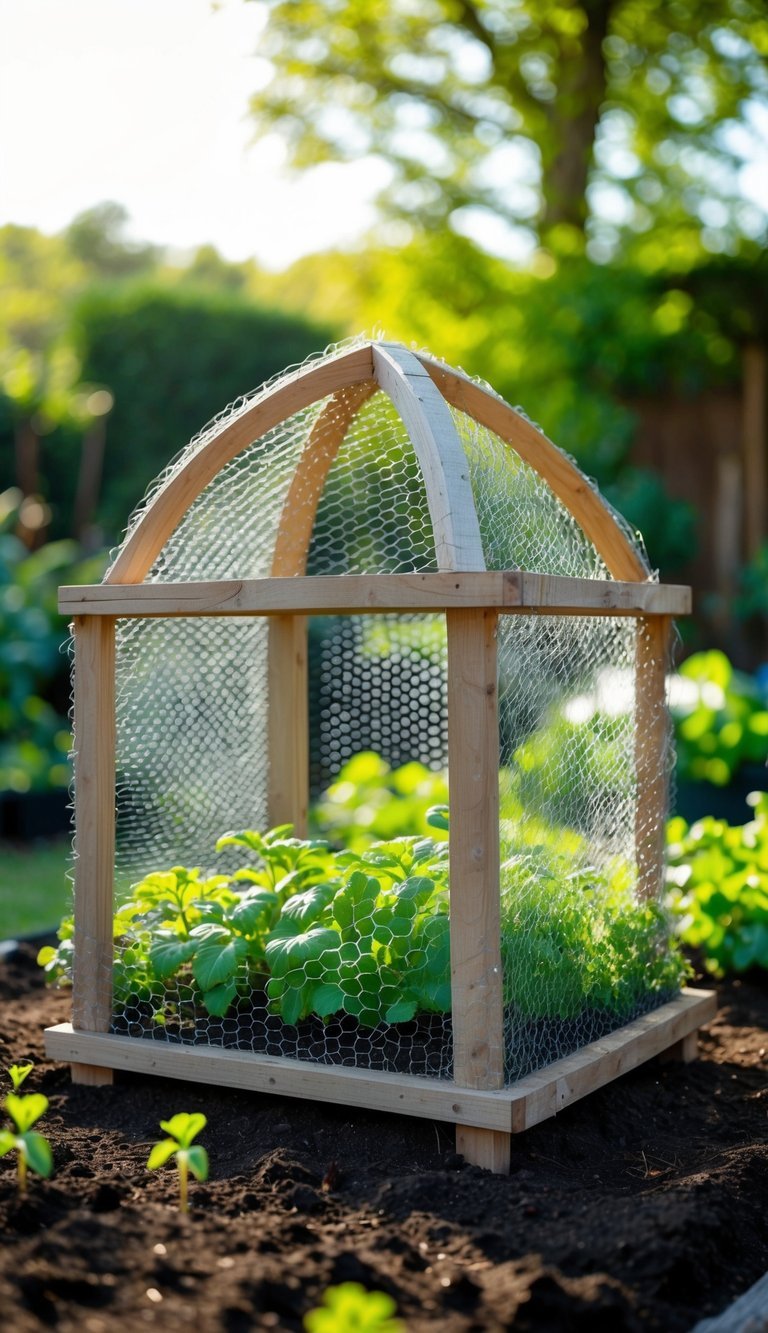
You can build a strong plant cover by combining wire mesh with a wooden frame. This design blocks birds and small animals while still letting sunlight and air reach your plants.
It’s easy to make and can be adjusted to fit different garden sizes. Use it to protect crops like lettuce and strawberries from pests.
8. Window Frame Cloche Made from Old Panels
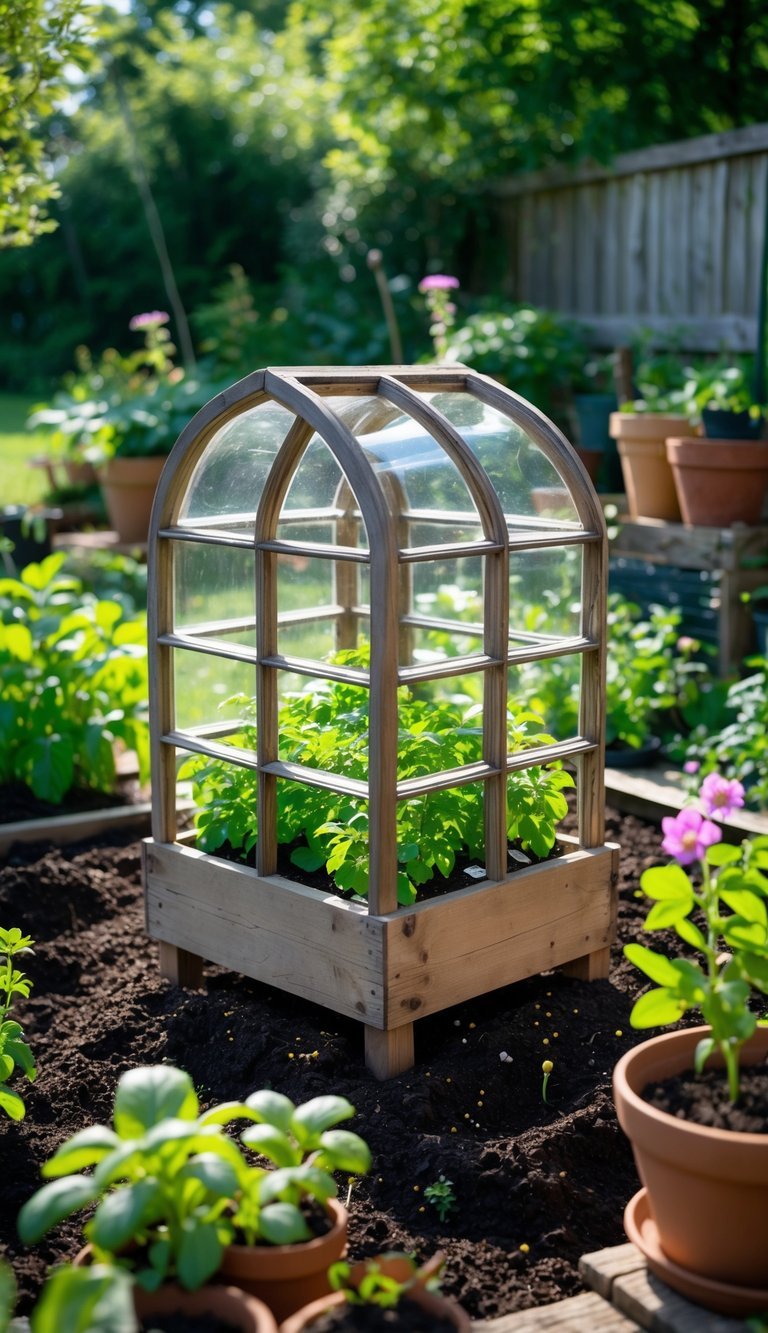
You can turn old window panels into a protective cover for your plants. By joining several panes, you create a small greenhouse that traps warmth while letting in sunlight.
This method reuses materials and adds a practical, charming shield for young plants or seedlings.
9. Breathable Fabric Covers for Frost Protection
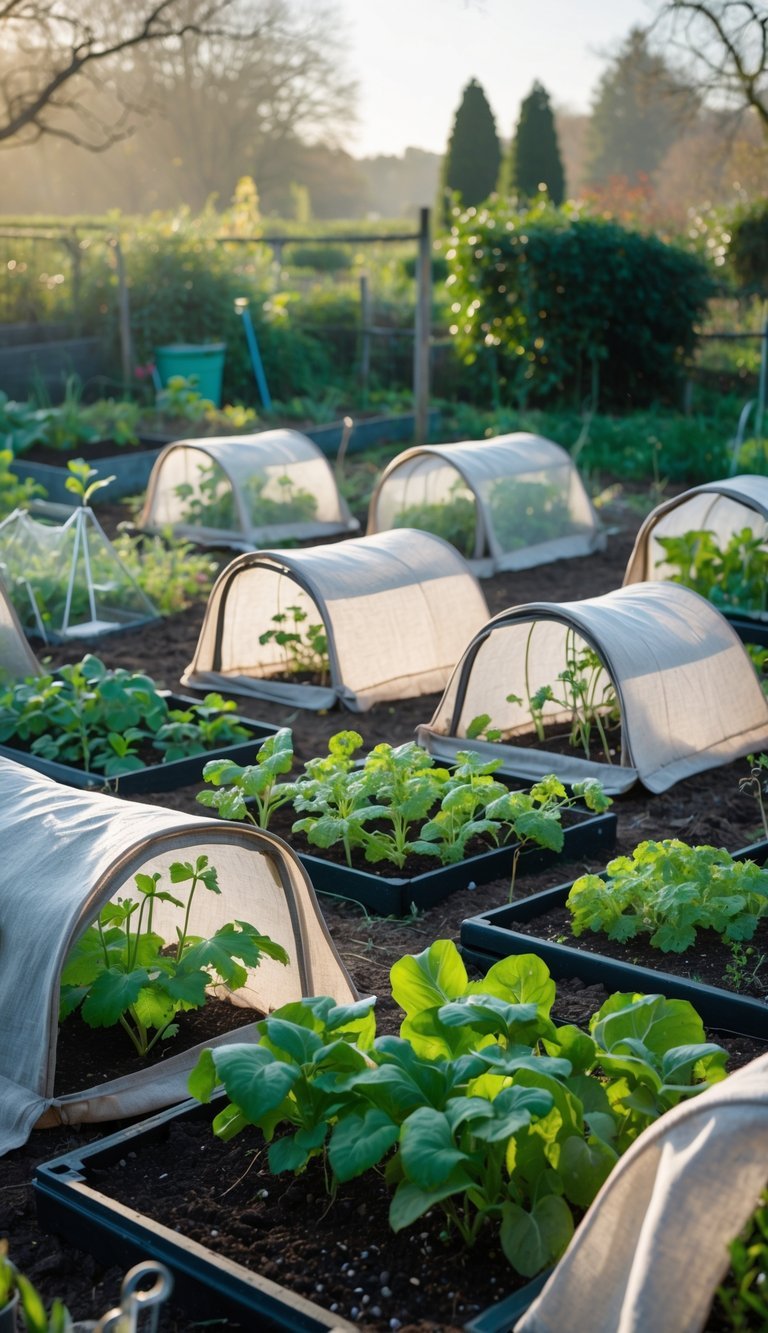
You can protect your plants from cold by using fabric covers that let air and moisture pass through. Materials like fleece or garden row covers help keep plants warm without trapping too much heat.
These covers also help you grow tender plants longer by shielding them from sudden frost.
10. Hanging Basket Plant Cover
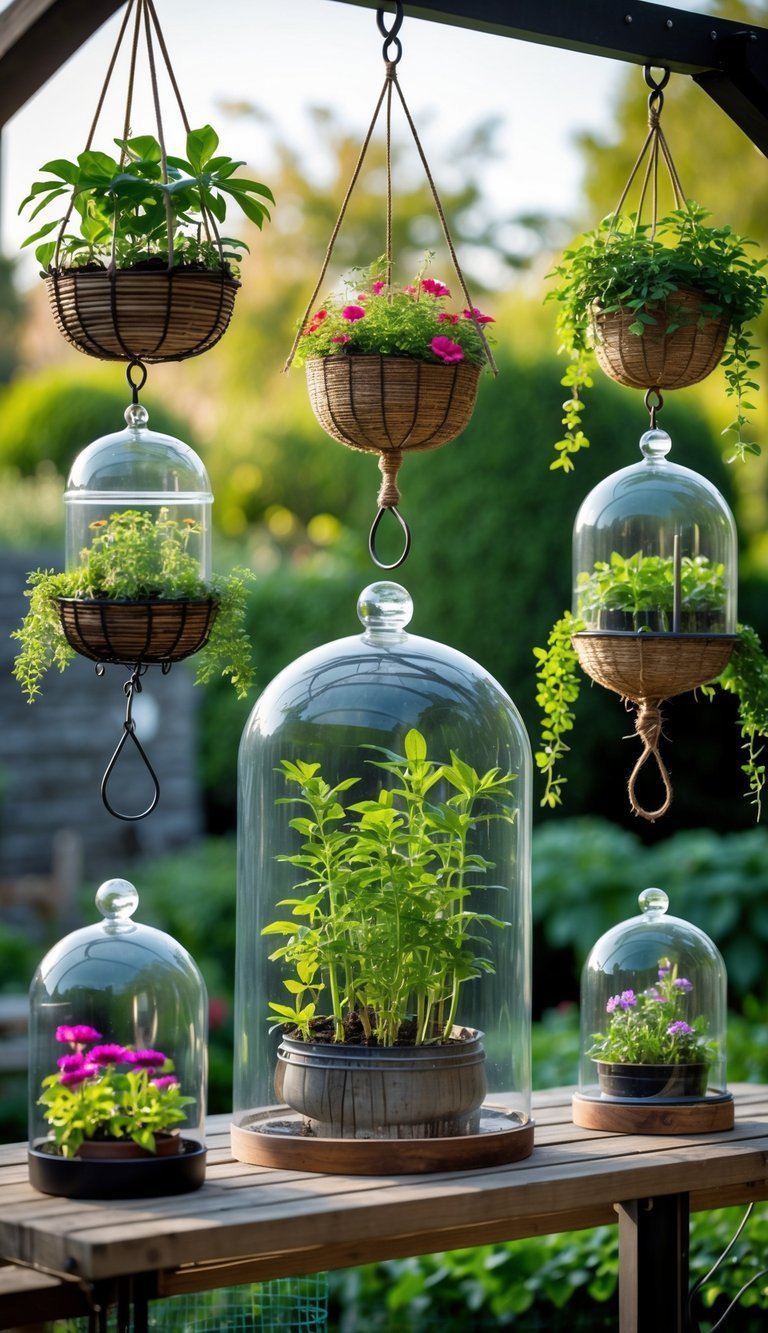
You can turn an old hanging basket upside down to create a simple cover for your plants. Its open design lets air flow while blocking birds, rabbits, and other pests from getting to your crops.
This method helps you recycle garden items and keep your plants protected without much effort.
11. Simple Hoop and Plastic Cover
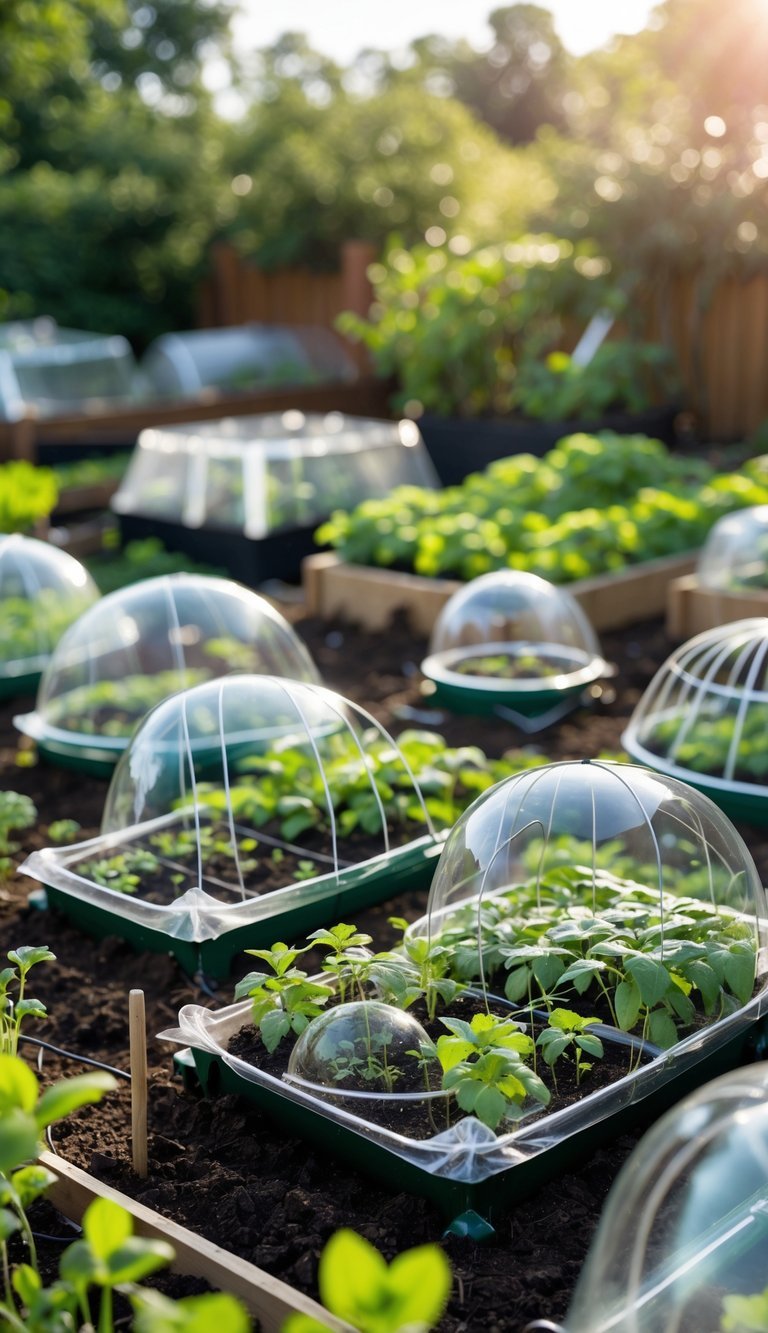
You can build a protective tunnel using flexible hoops and plastic sheets. This covers several plants at the same time, saving space and effort.
It keeps your vegetables warm and shields them from bad weather. This method is a practical choice when you want to protect more plants without buying a large greenhouse.
12. Cloche with Airflow Openings
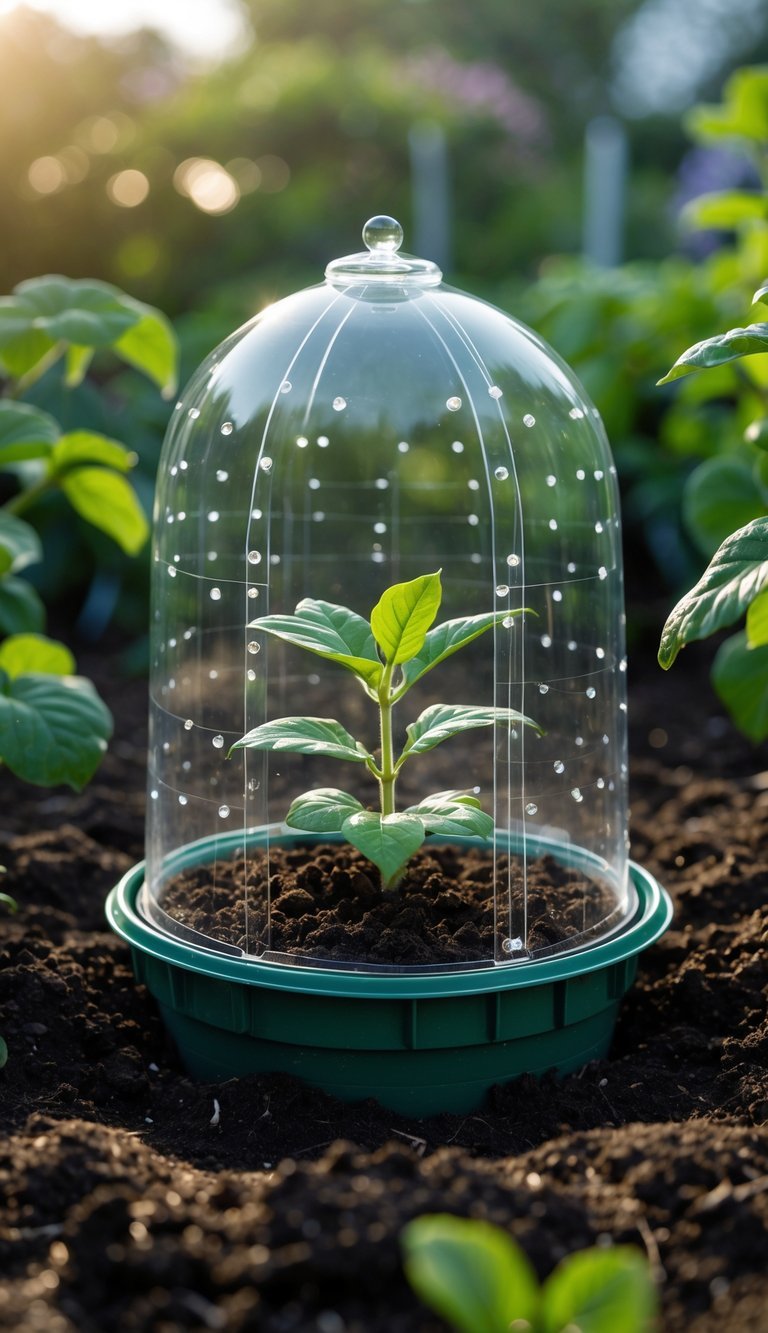
You want a cloche that keeps your plants safe without trapping too much heat or moisture. Adding small holes lets fresh air move inside, stopping dampness from building up.
This helps reduce risks of mold and fungal problems, especially in humid spots. Ventilation keeps your plants healthier while still offering protection.
13. Cake Cover Used as a Plant Protector
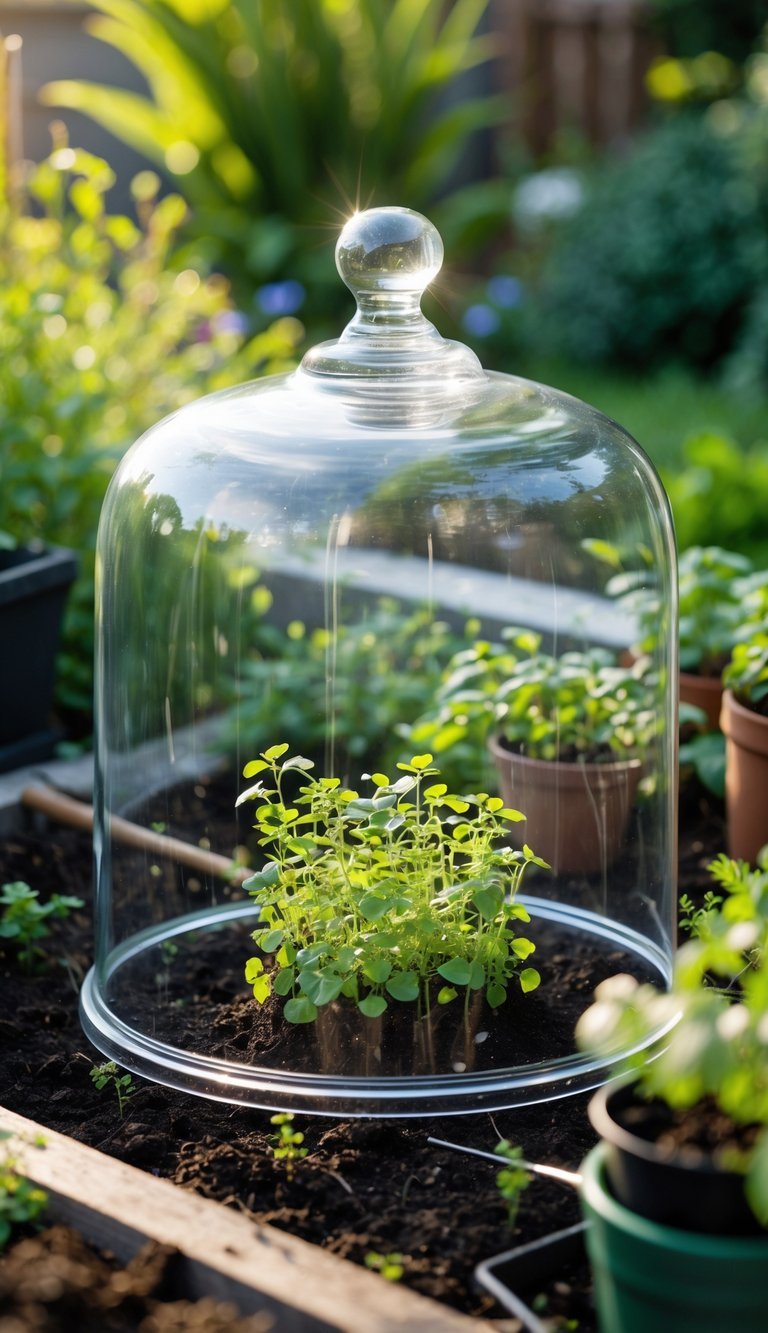
You can turn an old cake cover into a small cloche for your seedlings. The dome shape fits well over young plants and offers solid protection.
Its handle lets you lift it easily, making it a practical and eco-friendly choice for your garden.
14. Glass Dome Plant Protector
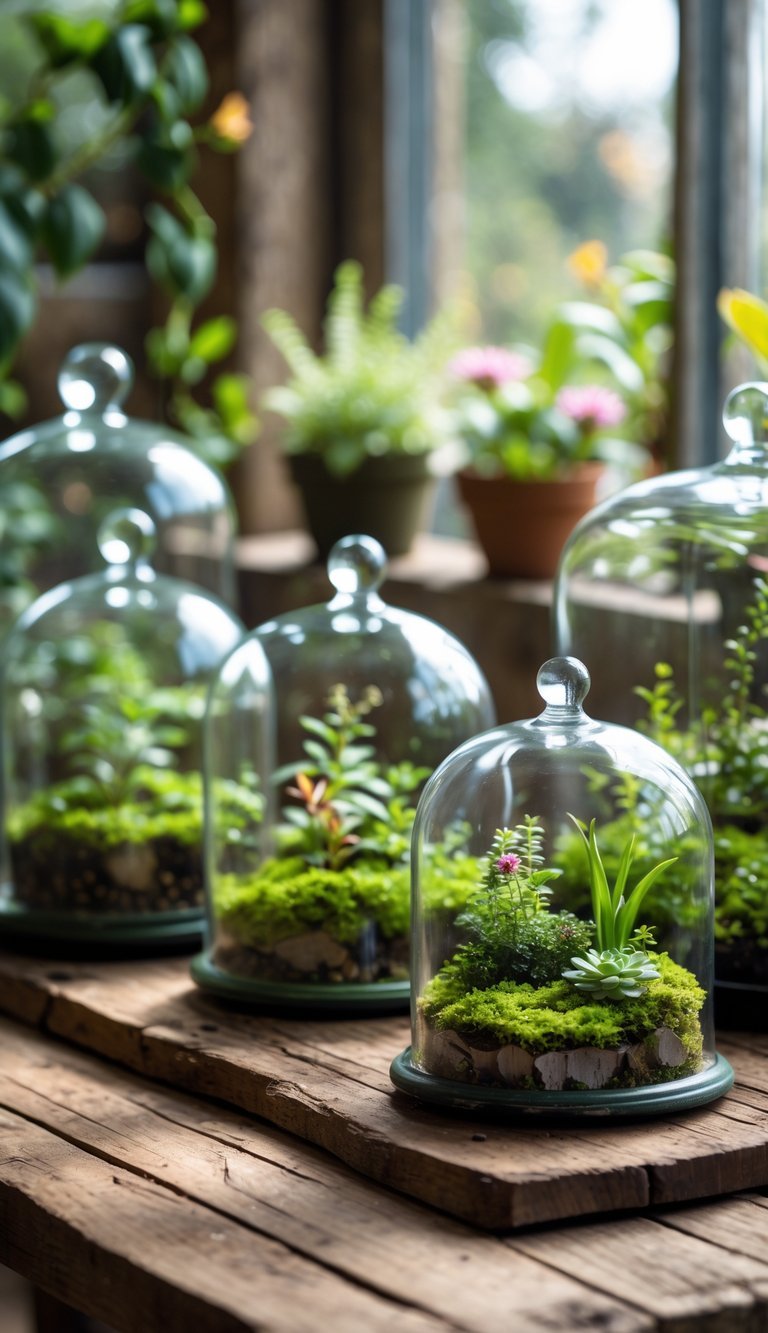
You can use a glass dome as a stylish cover that helps guard your plants from weather and pests. This type of cover creates a small, controlled space that supports healthy plant growth.
It adds charm to your garden while making it easier to care for delicate seedlings or young plants.
15. Stylish Metal Plant Protectors
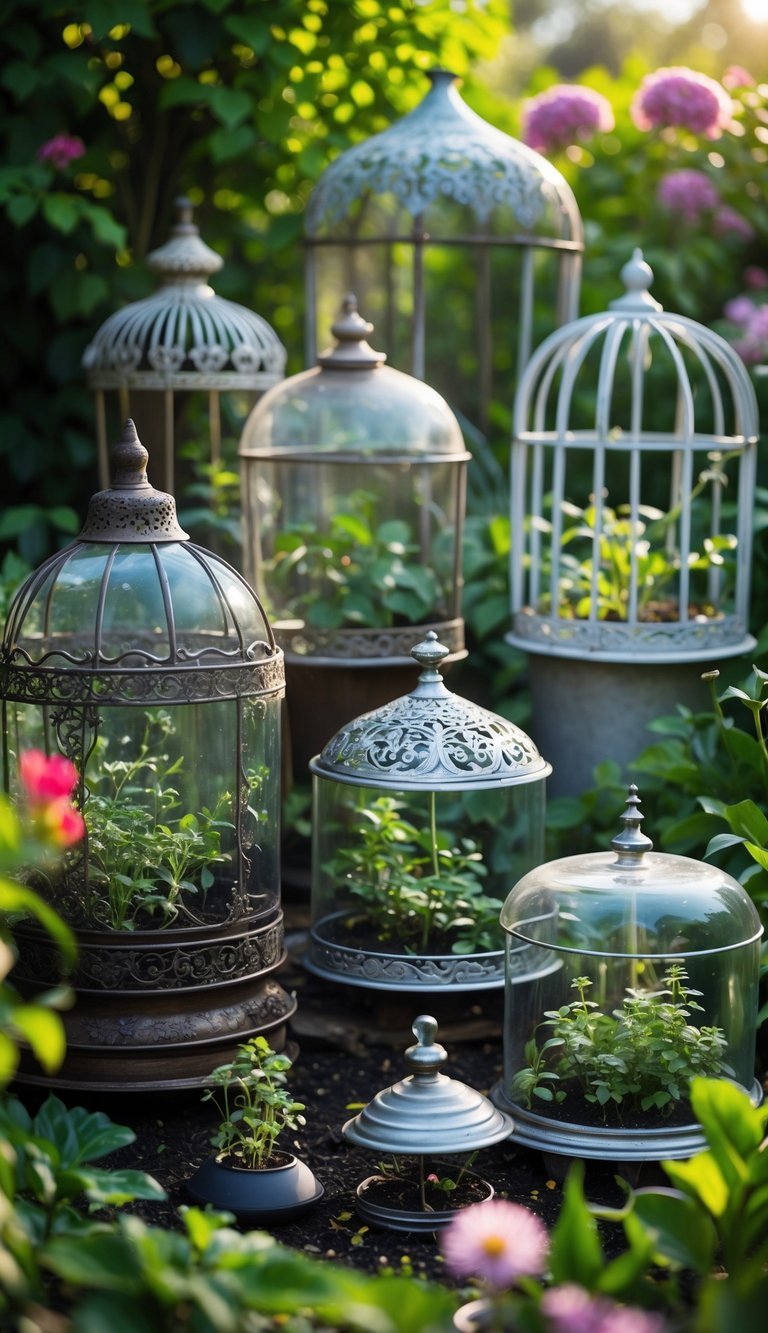
You can add charm to your garden with metal cloches that not only look good but also guard your plants from pests and weather damage. These cloches often feature detailed designs and strong frames, making them useful and decorative at the same time.
Using a metal cloche helps create a warmer, safer spot for your plants to grow. They work well against frost, bugs, and wind, giving your garden a better chance to thrive.
Whether you want something classic or modern, metal cloches come in many shapes and sizes to fit your space. You might choose a ready-made wire dome or try a creative DIY version.
Either way, these cloches are a smart way to protect young and delicate plants while adding a neat design touch.
Frequently Asked Questions
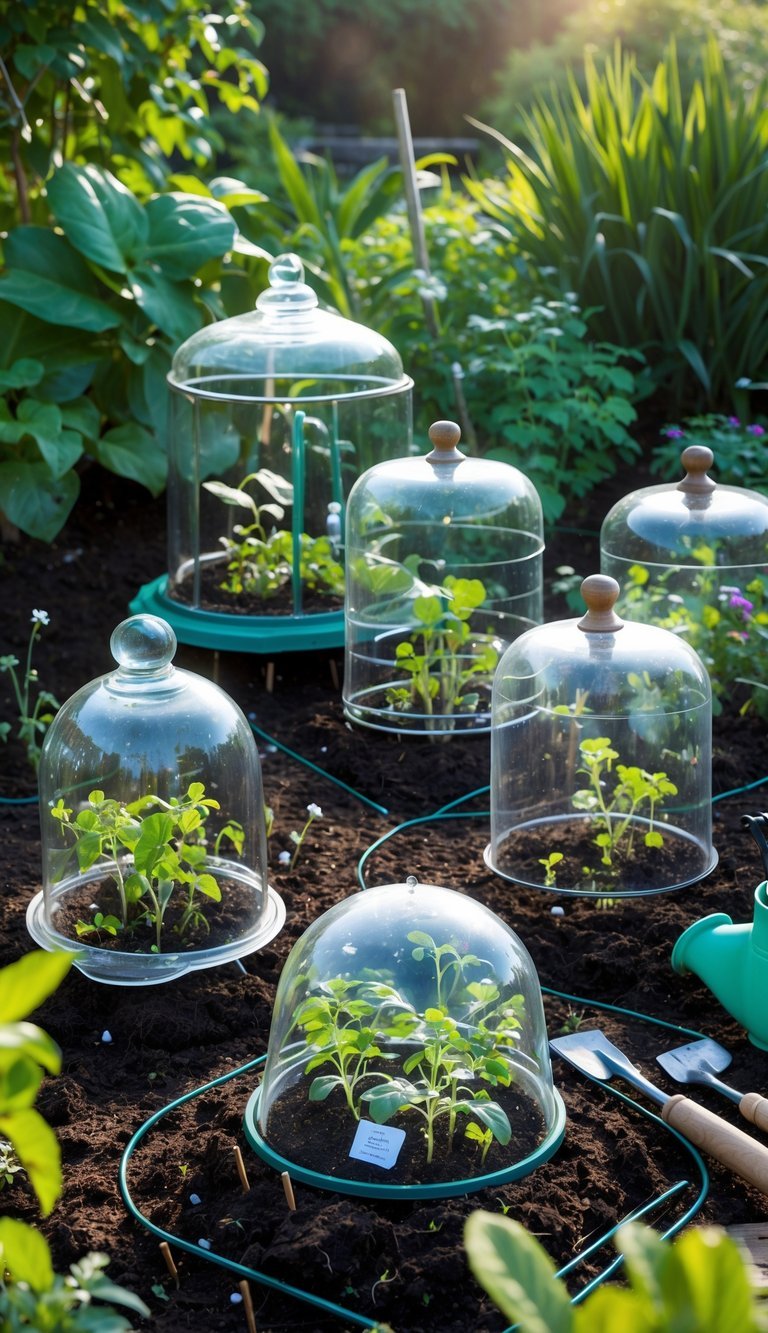
How can you make a garden cloche using items from home?
You can use clear plastic bottles or old glass jars to cover small plants. Cut a plastic container in half to create a mini greenhouse.
Another way is to repurpose wire hangers into a frame and then cover it with plastic wrap or even old shower curtains. Secure the edges with rocks or garden staples to keep it in place.
Which materials work best for building a DIY garden cloche?
Look for materials that let light in but protect plants. Clear plastic, glass, and lightweight fabrics are good choices.
Bamboo or metal rods make strong frames. Avoid heavy materials that block sunlight or don’t allow air and water through, since plants need both to grow.
How could you decorate a glass cloche for your garden?
Try adding small plants on top or hanging tiny ornaments inside for a decorative touch. You can paint the edges with weatherproof paints or wrap twine around the base for a rustic look.
Adding clips with name tags can make it both stylish and practical.
What are some tips for making a farmhouse-style garden cloche?
Use natural materials like wood or wire combined with vintage glass containers. Choose simple shapes and neutral colors.
Adding burlap or old lace can give it a warm, rustic feel. Keep the design functional but charming to fit a farmhouse garden.
How would you use chicken wire to build a useful garden cloche?
Shape the chicken wire into a dome or tunnel to cover plants. Secure it with stakes or zip ties to hold it steady against wind.
You can add plastic or fabric on top to protect against frost or heavy rain. Chicken wire helps keep pests away while allowing air flow.
What are some good designs for garden cloches that protect plants well?
Common designs include dome-shaped covers, tunnel frames, and box-style cloches. Dome shapes let water run off easily.
Tunnel frames provide lots of space for growing plants. Using removable lids or flaps helps with ventilation.

